Abstract
The size of the transmissible mink encephalopathy (TME) agent is estimated to be less than 50 nm on the basis of its passage through membrane filters. The agent is sensitive to ether, relatively resistant to 10% Formalin, resistant to ultraviolet irradiation, and susceptible to proteolytic digestion with Pronase. Attempts to extract an infectious nucleic acid fraction with hot phenol were unsuccessful. The results of these studies indicate that the TME agent has biochemical properties which are similar to those described for the transmissible agent of scrapie.
Full text
PDF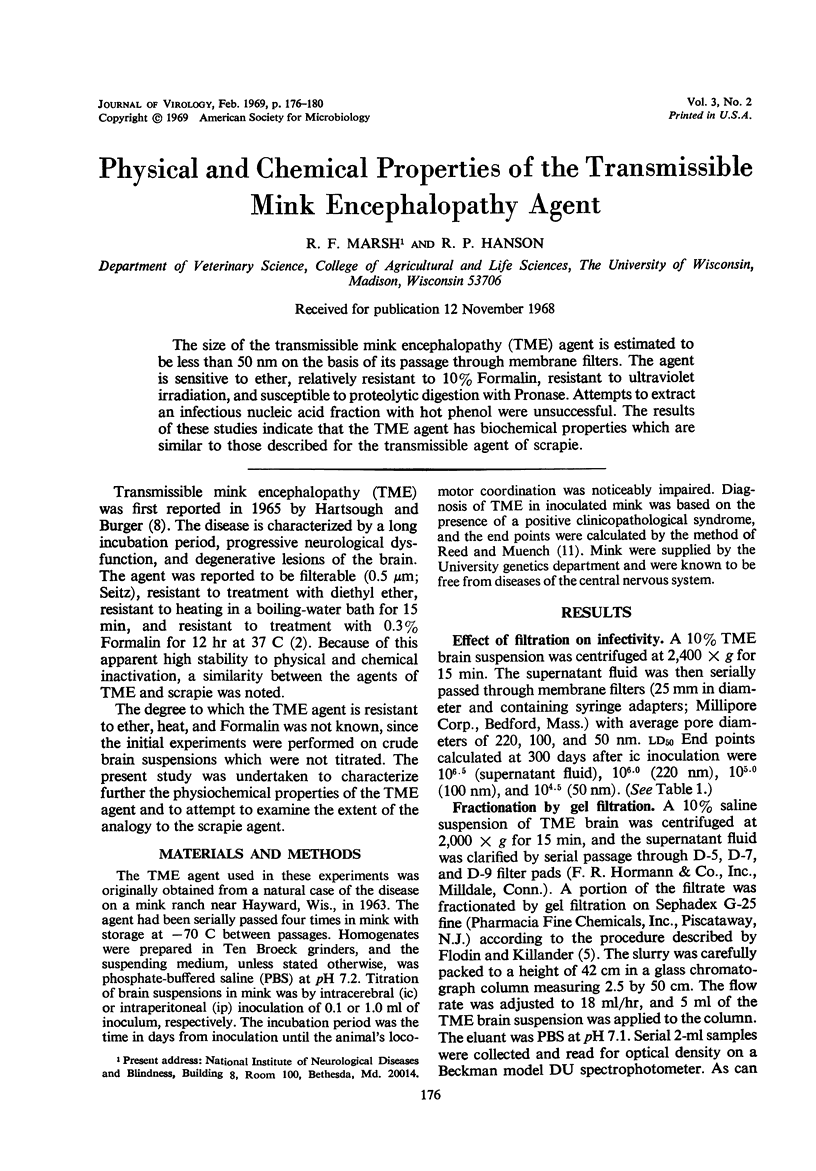
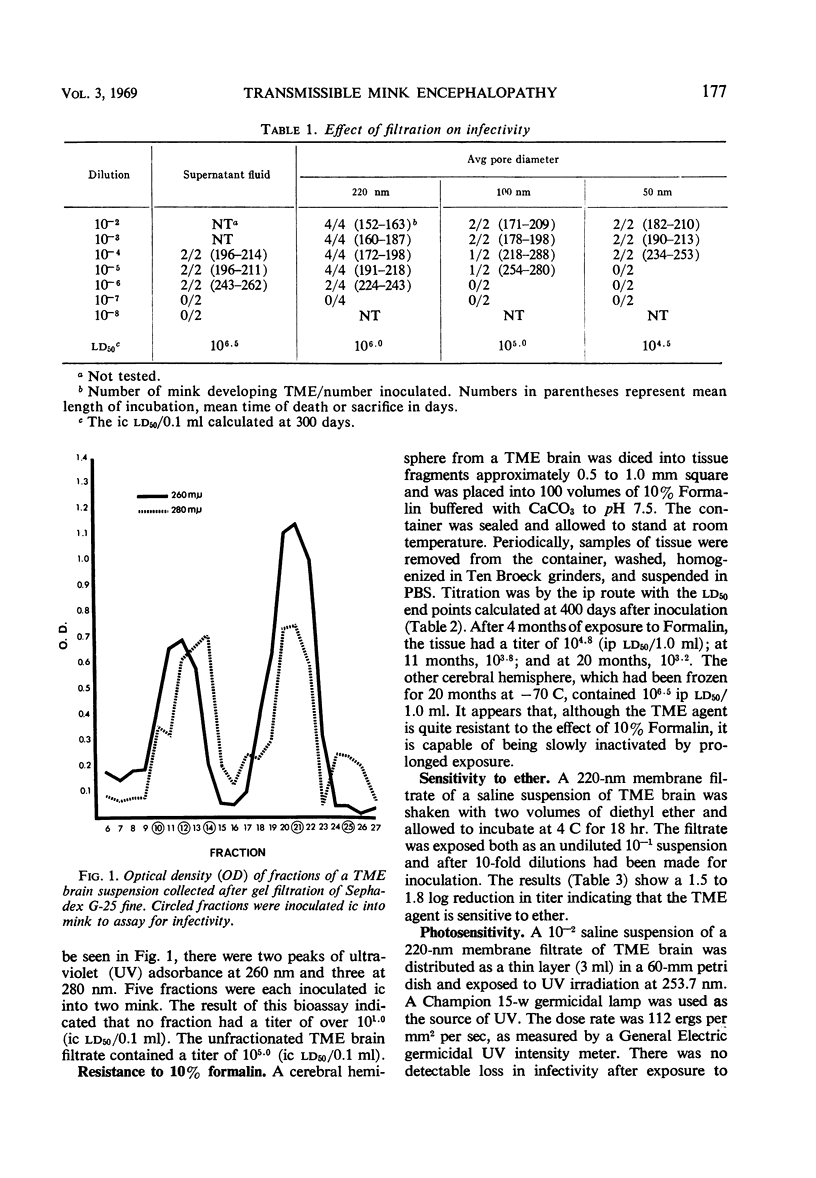
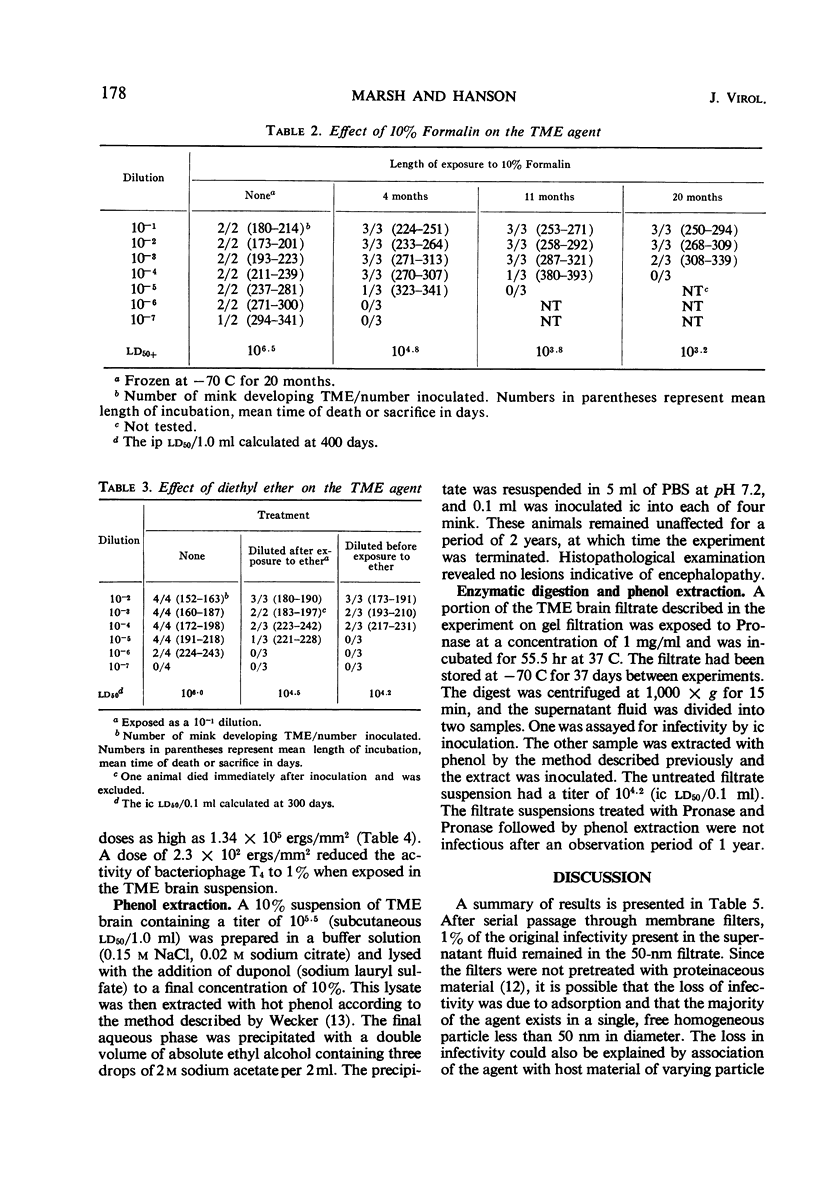
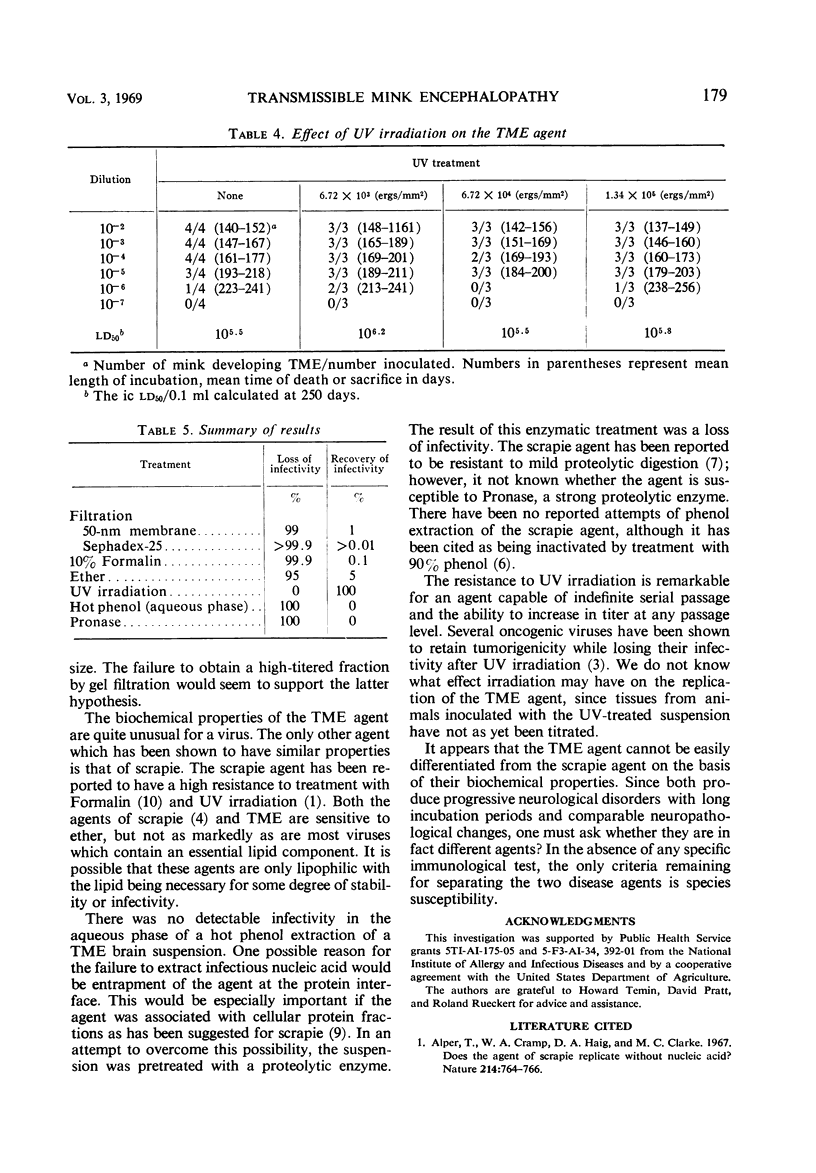
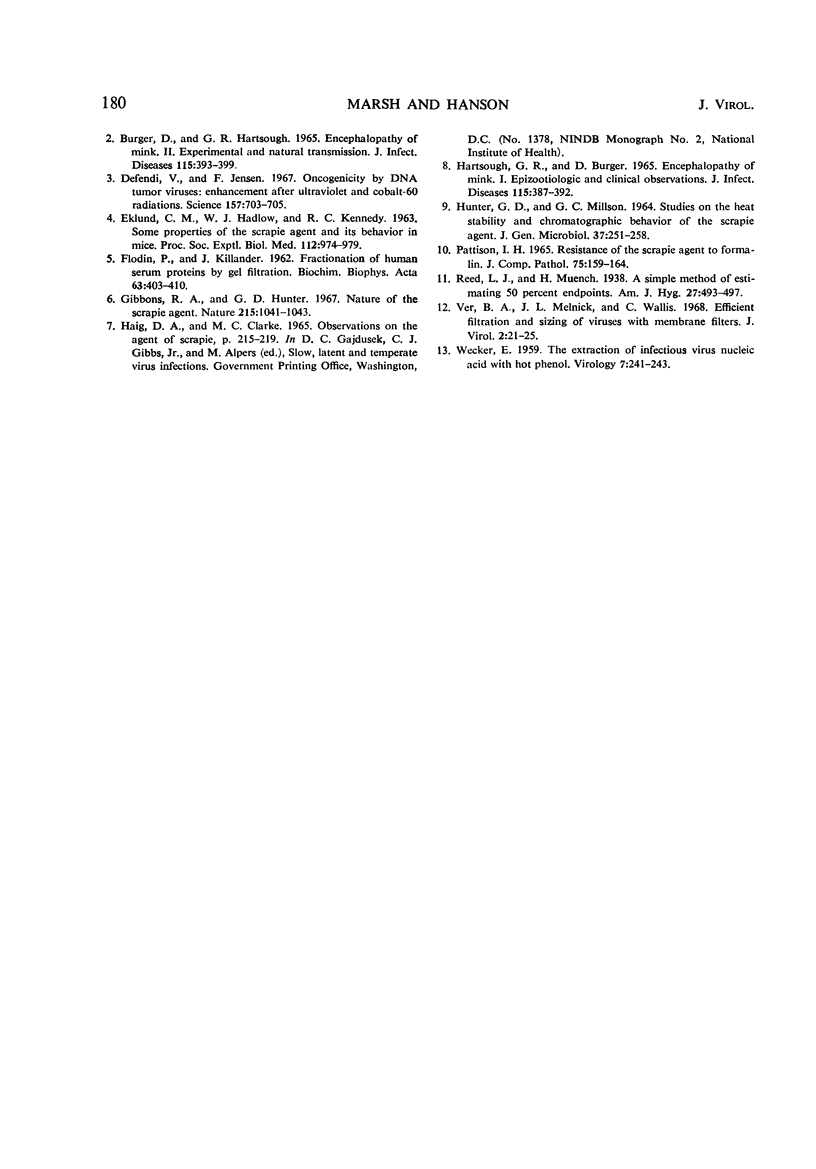
Selected References
These references are in PubMed. This may not be the complete list of references from this article.
- Alper T., Cramp W. A., Haig D. A., Clarke M. C. Does the agent of scrapie replicate without nucleic acid? Nature. 1967 May 20;214(5090):764–766. doi: 10.1038/214764a0. [DOI] [PubMed] [Google Scholar]
- Burger D., Hartsough G. R. Encephalopathy of mink. II. Experimental and natural transmission. J Infect Dis. 1965 Oct;115(4):393–399. doi: 10.1093/infdis/115.4.393. [DOI] [PubMed] [Google Scholar]
- Defendi V., Jensen F. Oncogenicity by DNA tumor viruses: enhancement after ultraviolet and cobalt-60 radiations. Science. 1967 Aug 11;157(3789):703–705. doi: 10.1126/science.157.3789.703. [DOI] [PubMed] [Google Scholar]
- FLODIN P., KILLANDER J. Fractionation of human-serum proteins by gel filtration. Biochim Biophys Acta. 1962 Oct 8;63:402–410. doi: 10.1016/0006-3002(62)90104-x. [DOI] [PubMed] [Google Scholar]
- Gibbons R. A., Hunter G. D. Nature of the scrapie agent. Nature. 1967 Sep 2;215(5105):1041–1043. doi: 10.1038/2151041a0. [DOI] [PubMed] [Google Scholar]
- HUNTER G. D., MILLSON G. C. STUDIES ON THE HEAT STABILITY AND CHROMATOGRAPHIC BEHAVIOUR OF THE SCRAPIE AGENT. J Gen Microbiol. 1964 Nov;37:251–258. doi: 10.1099/00221287-37-2-251. [DOI] [PubMed] [Google Scholar]
- Hartsough G. R., Burger D. Encephalopathy of mink. I. Epizootiologic and clinical observations. J Infect Dis. 1965 Oct;115(4):387–392. doi: 10.1093/infdis/115.4.387. [DOI] [PubMed] [Google Scholar]
- PATTISON I. H. RESISTANCE OF THE SCRAPIE AGENT TO FORMALIN. J Comp Pathol. 1965 Apr;75:159–164. doi: 10.1016/0021-9975(65)90006-x. [DOI] [PubMed] [Google Scholar]
- Ver B. A., Melnick J. L., Wallis C. Efficient filtration and sizing of viruses with membrane filters. J Virol. 1968 Jan;2(1):21–25. doi: 10.1128/jvi.2.1.21-25.1968. [DOI] [PMC free article] [PubMed] [Google Scholar]
- WECKER E. The extraction of infectious virus nucleic acid with hot phenol. Virology. 1959 Feb;7(2):241–243. doi: 10.1016/0042-6822(59)90191-6. [DOI] [PubMed] [Google Scholar]


